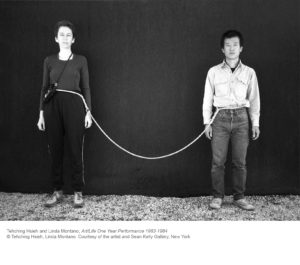Waiting for everyday healthcare in post-war Britain: gender, class and family in the GP waiting room, 1948-75
Body, Self, Family Seminar Series: Gender, Subjectivity and “Everyday Health” in the Post-1945 World, 15 February 2021.
For the series description, programme and abstracts: https://bodyselffamily.org/blog/?page_id=114
Announcing the arrival of the National Health Service in 1948, a government leaflet proudly declared that ‘everyone – rich or poor, man, woman or child – can use any part of it’, with the system funded ‘not out of insurance contributions’ but general taxation. Though addressing many inequalities of access to healthcare that had previously plagued women, children, and people without regular work, the universalism of the new service had its limits. Notably, persistent social and economic inequities manifested temporally. For instance, the gendered division of caring responsibilities – as built into the new health and social security system – continued to disproportionately subject women (especially working class women) to waiting in the first post-war decades. Working men might find evening surgeries provided to fit around productive duties, whilst wealthier patients could still purchase medical time (albeit at a premium). Many women, moreover, not only had to wait for and with children, but also found their waiting time squeezed by competing caring responsibilities. Despite languages of universalism, increased productive efficiency and “fair shares for all” thus depended on the suspension of women’s time.
Focusing on GPs’ waiting rooms in post-war Britain under “classic welfare state”, this paper examines the way that waiting’s cultural norms, social and temporal distributions and politicisation remained stratified by class and gender after the creation of universal healthcare. It argues, firstly, that cultural and political expectations of post-war Britain produced temporal hierarchies that regularly deputed waiting to women. Secondly, it suggests that the interpretations and uses of waiting were also gendered and classed, albeit in varied ways. For some, the demands of family life – of waiting with children, and of balancing competing domestic responsibilities – made waiting for the GP frustrating, an imposition to be minimised. Particularly for the middle classes, it became the focus of collective organisation to promote patients’ temporal rights and gain greater consideration in service planning. By contrast, for others – not least, older, working class women – waiting provided time and space for reinforcing communal bonds. Delay may have been irritating and psychologically demanding, but its relationality made it bearable. Once again, this orientation to social time – or at least the content of waiting’s social exchanges – bore the marks of gendered and classed forms of socialisation and cultural expectations.
Finally, the paper concludes with reflections on the challenges of writing histories of waiting in everyday healthcare. An “everyday” analytic enables historians to make visible the way that mundane practices and routine interactions express, conflict with, and mutually constitute broader social processes, political developments, and cultural trends. Nonetheless, this paper suggests, recovering individual and collective experiences of waiting remains both an epistemic quandary and practical challenge given the silences and power distributions shaping the historical record.
‘Why not include an aquarium or small aviary?’ The materiality of NHS waiting rooms in Britain’s Queuetopia, c.1948-1958
European Association for the History of Medicine and Health Biennial Conference, University of Birmingham, 27-30 August 2019
Read Martin’s blog about the conference, and his and Michael’s papers
‘“Bright-while-you-wait”: GPs’ waiting rooms, health citizenship, and interstitial time in Britain’s queuetopia, c.1948-56’.
Modern British Studies Conference, University of Birmingham, 3rd-5th July 2019
https://mbsbham.wordpress.com/mbs-2019-modern-british-studies-beyond-boundaries/
In the decade following the creation of the National Health Service, the bounded-yet-permeable space of the general practice waiting room became increasingly seen as a political problem. Patients complained about the adequacy and comfort of waiting rooms to statutory bodies, newspapers and MPs. Considered alongside emergent international critiques of practice standards, the Ministry of Health grew concerned at how such criticisms might damage the standing of the new service. Finally, practitioners themselves bristled at external interference with their premises, lamenting a loss of professional autonomy and patient deference.
At the same time, GPs also suggested that redesigning the waiting room provided an opportunity. As a conduit through which patients flowed, the waiting room held the key to maximising efficiency and reducing practitioners’ anxieties about queuing patients. As a temporal container – as a space holding patients stuck in the interstitial, non-productive time of waiting – the properly decorated waiting room also offered the chance to manage patients’ mental states, shape how patients exercised their new health citizenship, and to differentiate general practice from the hospital.
Through its focus on the waiting room, this paper looks to explain why there was such interest in the bounded spaces and temporalities of early NHS general practice. Frustrations with inefficiency and delay are common features of modern attitudes towards time. Yet, this paper argues, we cannot fully understand debates about the time and spaces of waiting in the early NHS without attending to the immediate post-war context: the new dynamics and social relations of healthcare, debates about reconstruction, anxieties around changing social and professional status, and political and cultural concerns with time-use in a period of shifting global and imperial politics. In taking an historical look at the space and time of healthcare, therefore, this paper looks to situate the NHS in a broader cultural, social and political context and to consider the limits of historical perspectives on a supposedly universal topic.
‘“Well, we had our first child on the NHS…”: Waiting and the everyday in the early National Health Service’
Cultural Histories of National Health Care Conference, University of Warwick, 18th-19th September 2018
This paper asked to what extent waiting as an everyday interaction with the NHS had distinctive cultural effects in the early post-war decades. In response, it argued that the way that political promises and values of the NHS met with the reality of waiting for healthcare inflected how the British public interpreted both the new health service and their waiting within it. Culturally, public provision became quickly associated with unproductive waiting and professional disregard for patients, and these tropes and assumptions shaped interactions with the NHS’s perpetual shadow – private medicine. From general practice and private consultants in the 1950s to BUPA in later decades, doctors and patients increasingly framed private care in temporal terms during the post-war period: convenience (placing patients in control of timing), speed (reduction of waiting), and timeliness (spending time with patients) became key selling points to private alternatives.
‘What did it mean to wait in the early NHS? Discourses of waiting in the British National Health Service, c. 1940s-1960s’?
Society for the Social History of Medicine Biennial Conference, University of Liverpool, 11th-13th July 2018
https://www.liverpool.ac.uk/events/event/?eventid=88265
Contemporary discussion of waiting in the UK National Health Service (NHS) has often centred upon waiting as a symbol of failure, whether that is a failure of central government to provide sufficient funds, or a failure of institutions and practitioners to provide quality service. Such a discourse is, of course, closely related to the way in which waiting times and waiting lists have been quantified and managerialised since the 1980s; a process that, as Sheard has recently demonstrated, was fostered by the development of new areas of health economics and managerial expertise.
In this paper, however, I explore how the meaning of waiting was constructed during the early decades of the NHS. Specifically, I examine the ways in which changing institutional, political, and technological contexts of post-war Britain offered waiting a new set of often contradictory values. Media outlets, politicians, and health think-tanks, for instance, discussed waiting in diverse ways: as a symbol of egalitarianism, as abandonment, as an inevitable outcome of socialist ineptitude, and as a consequence of professional self-interest and poor co-ordination. Crucially, however, I suggest that the construction of waiting as a problem for healthcare was not simply a top-down process. It was – at least in part – a product of interaction and dialogue between the public, service users, and novel mechanisms of surveillance, through which dissatisfaction and praise could be expressed and translated into meaningful utterances.


